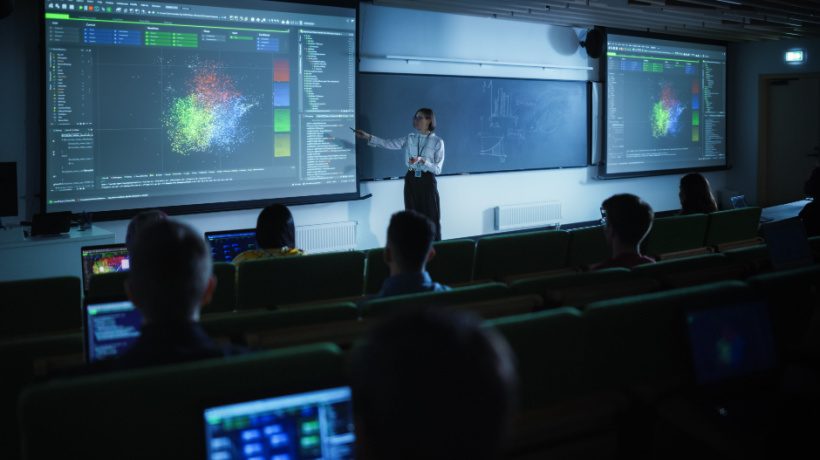Effects Of Integrating Technology In Classrooms
Technology integration into education has sparked a profound evolution in the cultural fabric of classrooms. This change transcends the mere incorporation of new tools; it is a fundamental shift in the ethos and dynamics of educational environments. The convergence of technology and education has reevaluated traditional pedagogical approaches, prompting educators and students to navigate a landscape where digital and cultural realms intersect. This article offers an in-depth exploration of the multifaceted cultural adaptations in tech-infused classrooms. We examine how technology is reshaping the educational experience, the transformative impact on teaching and learning practices, and the broader implications for shaping a contemporary culture of learning that reflects our increasingly digital world.
4 Ways Integrating Technology Is Changing The Traditional Classroom
Technology: A Driving Force For Cultural Transformation In Education
The role of technology in the classroom extends beyond a functional tool; it acts as a driving force for a cultural transformation in educational settings. This shift involves reimagining conventional classroom practices and fostering environments that prioritize collaboration, innovation, and student empowerment. The traditional teacher-led model gives way to more interactive and student-centered approaches in the tech-infused classroom. Technology enables a culture where creativity and critical thinking are paramount, encouraging students to engage with learning material more meaningfully and personally. The digital age demands skills beyond rote memorization, and technology-infused classrooms are responding by cultivating these essential competencies in students, preparing them for the complexities of the modern world.
Revolutionizing Curriculum Design With Digital Integration
Adapting curricula for tech-infused classrooms is a transformative process that goes beyond the digitization of traditional learning materials. It entails a comprehensive rethinking of how educational content is delivered and experienced. Educators creatively integrate digital tools into the curriculum to create more engaging, interactive, and personalized learning experiences. This involves leveraging various digital resources, from interactive software and online simulations to digital storytelling and collaborative online projects, to enrich learning. The curriculum is being reshaped to include not only digital literacy as a core component but also to incorporate digital tools to enhance subject matter understanding across various disciplines. Integrating technology in curricula also facilitates the development of new skills and subjects, such as coding, digital arts, and data analytics, broadening the educational landscape and fostering a culture of continuous innovation and adaptation.
Evolving Roles Of Educators In The Digital Classroom Ecosystem
In the landscape of tech-infused education, the role of educators is undergoing a significant evolution. No longer the sole custodians of knowledge, educators in the digital age are transitioning to roles such as facilitators, mentors, and guides in the learning journey. They are tasked with integrating technology that enriches and enhances the educational experience. This new role requires educators to be adept in digital pedagogy and capable of harnessing the potential of various technologies to create a dynamic and interactive learning environment. Professional development is critical in this regard, equipping educators with the necessary skills to manage tech-infused classrooms effectively. This training should encompass the technical aspects of using digital tools and methodologies for fostering critical thinking, creativity, and collaborative learning in a digital context.
Cultivating Inclusivity And Cultural Sensitivity In Tech-Enhanced Learning
As technology becomes integral to the educational landscape, ensuring cultural sensitivity and inclusivity in tech integration is paramount. The tech-infused classroom must be a space where diversity is respected and embraced, and technology is used to promote equitable learning opportunities for all students. Addressing the digital divide is crucial, ensuring that all students, regardless of their socio-economic background, access necessary technology and digital resources. Additionally, educators must be mindful of their students' diverse cultural backgrounds and learning styles, using technology in inclusive and accommodating ways. This approach enhances the learning experience for all students and fosters an environment of mutual respect and understanding, reflective of our diverse global society.
Navigating The Complexities Of A Tech-Driven Educational Landscape
While integrating technology in education offers many opportunities for enhancing learning, it also presents complex challenges. Managing screen time, ensuring the relevance and quality of digital content, and balancing technological tools with traditional pedagogical methods are critical considerations. The rapid evolution of technology also requires educators and students to remain adaptable, continuously updating their skills to stay abreast of new developments and tools. Navigating these challenges effectively is critical to maximizing the benefits of technology in education and ensuring that it serves as a tool for enhancement rather than a barrier.
Conclusion
Technology integration in education signifies a pivotal cultural shift, redefining the learning and teaching landscape. As we continue to embrace this evolution, recognizing both its potential and its challenges is essential. By fostering a culture of adaptation, inclusivity, and continuous learning in tech-infused classrooms, we are shaping an educational future that is dynamic, equitable, and responsive to the needs of a digital society. This future-oriented approach to education, grounded in the thoughtful integration of technology, is critical to preparing students for the challenges and opportunities of an increasingly interconnected and digital world.

